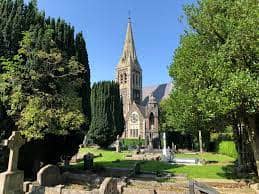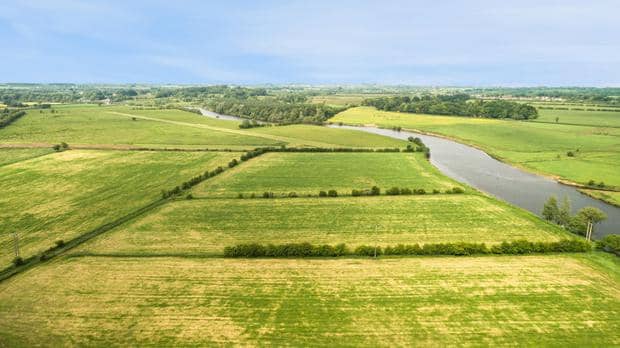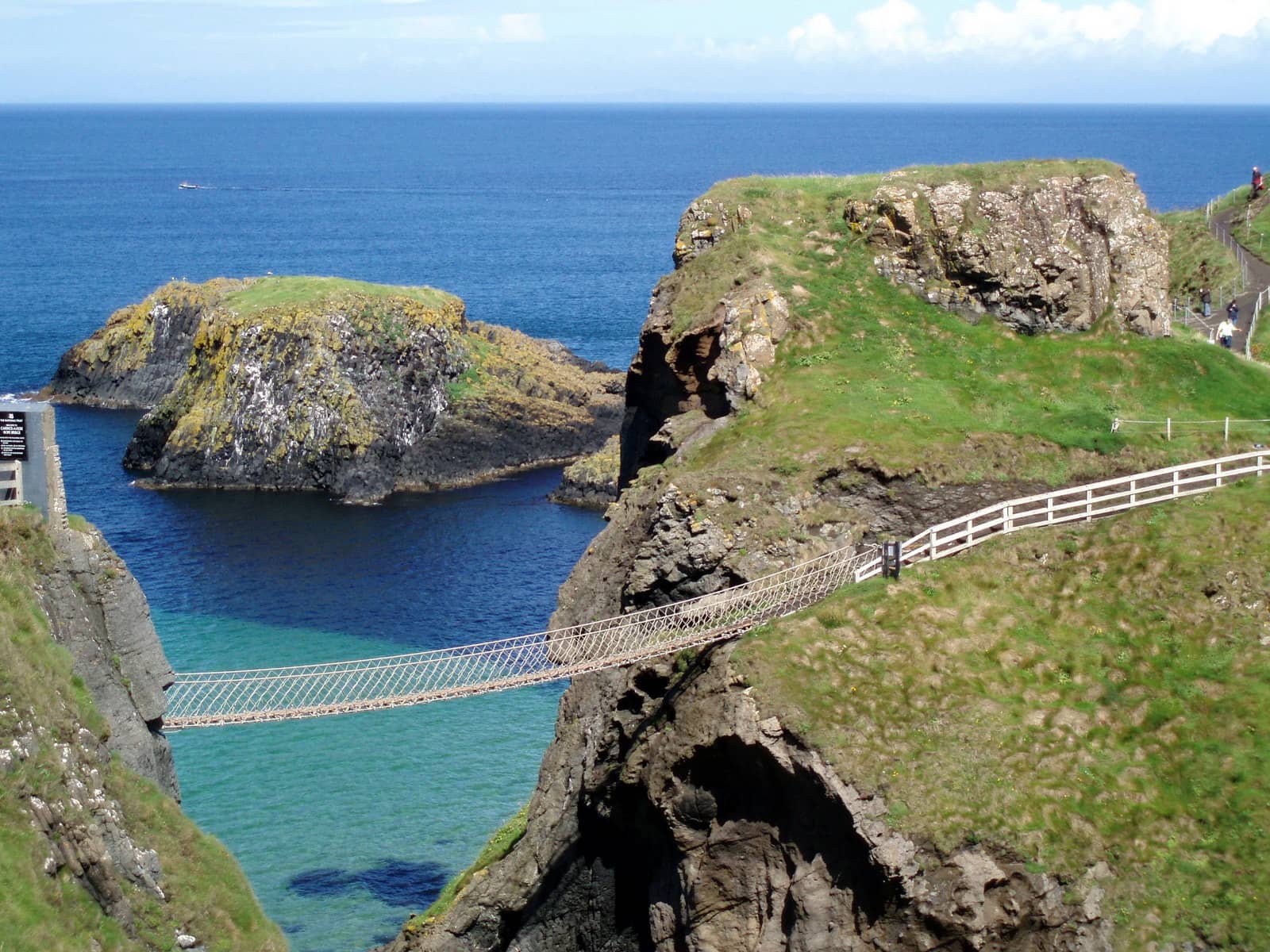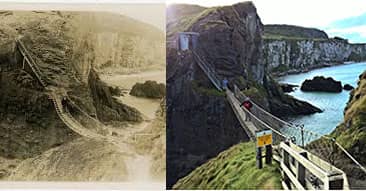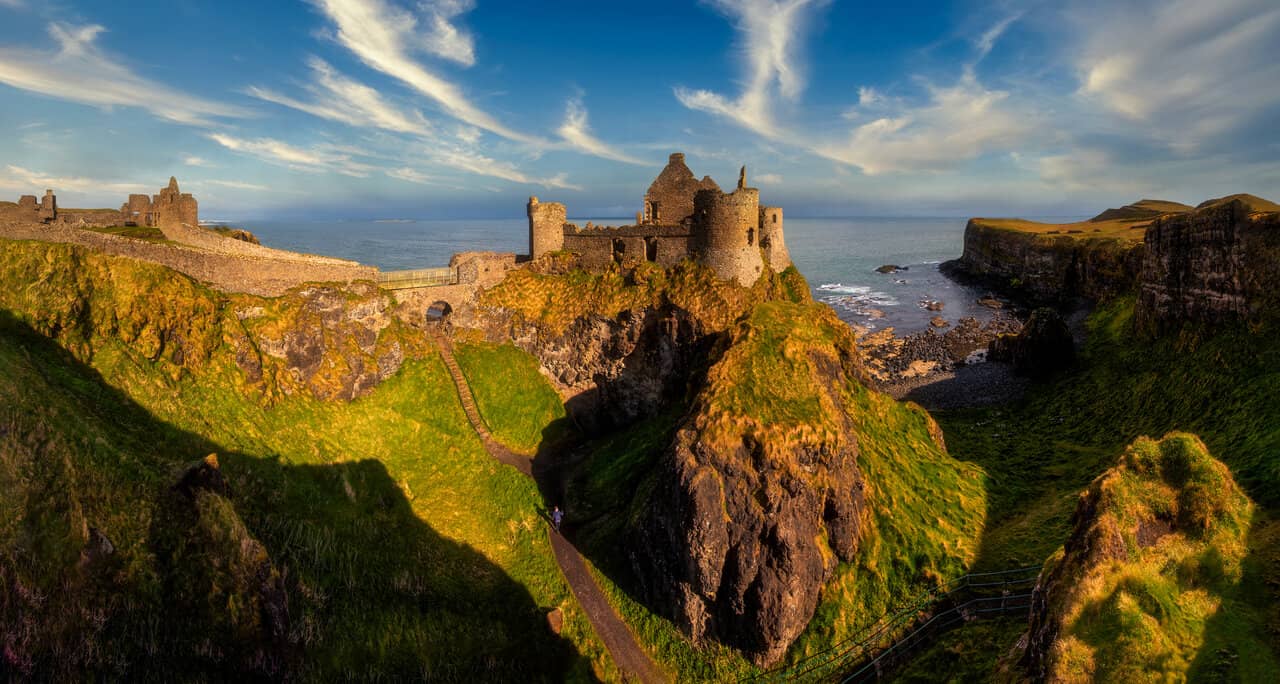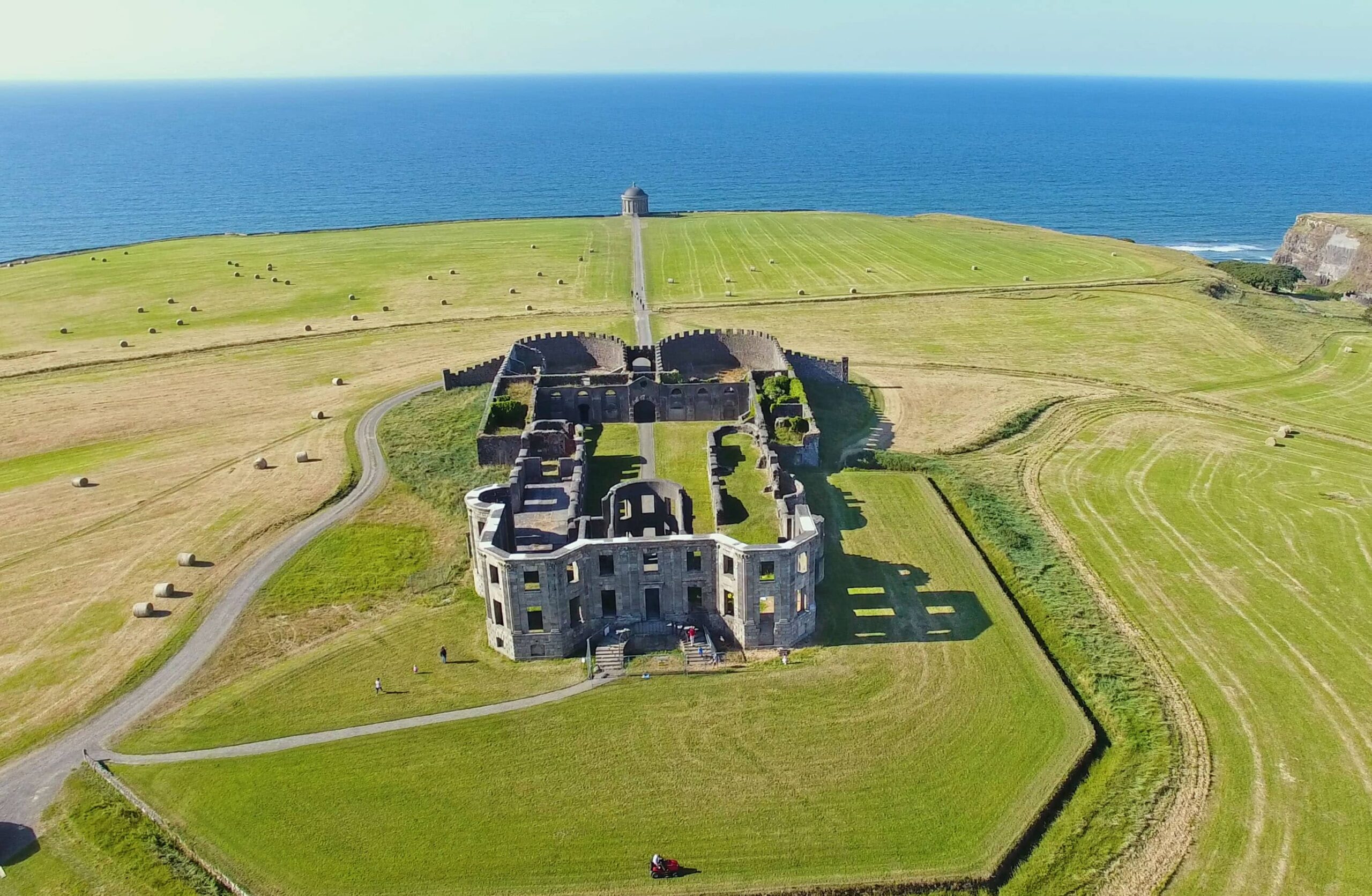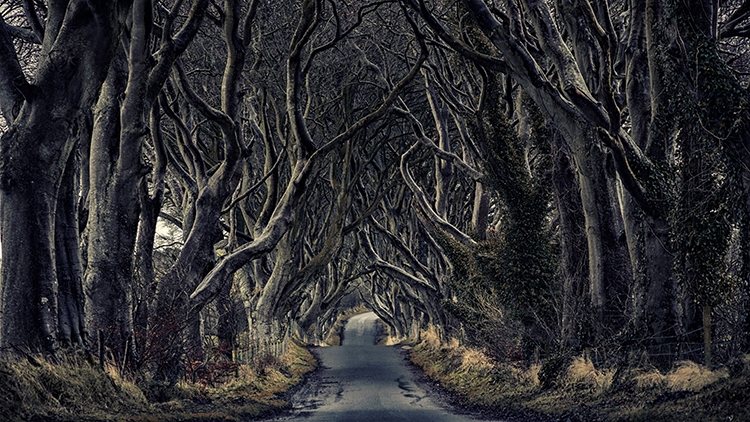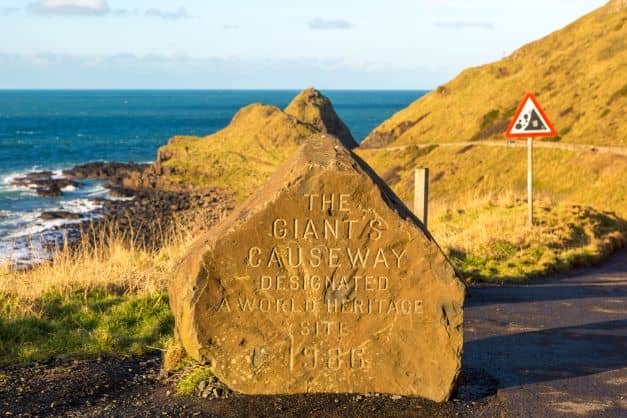0
Guide To The Dark Hedges
The Guide to the Dark Hedges
The Dark Hedges, one of the most popular attractions in Northern Ireland, is a beautiful row of beach trees made famous by appearances in TV shows and films such as Game of Thrones. The Dark Hedges is a favourite stop on the Causeway Coastal Route road trip, running along Ireland’s North Coast from Belfast to Derry.
In this guide, we’re going to look at everything you need to know to get the most out of your visit to the Dark Hedges, including how to get there, where to park, how to avoid the crowds, and places to stay nearby.
What are the Dark Hedges?
The Dark Hedges is an avenue of mature beech trees, planted around 1775 by James Stuart to frame the avenue leading to his home, Gracehill House. The trees, originally around 150, line both sides of Bregagh Road, forming an imposing tunnel along the roadway.
Today, the Dark Hedges still lead up to the current gates of Gracehill House.
Gracehill House is privately owned and operates as a bar & restaurant, wedding venue, and golf course. So you can visit the estate for a drink, meal, or play a round of golf while on your trip.
Game of Thrones (GoT) fans should visit Gracehill House during opening hours to see one of the 10 GoT-themed doors based on the 6th season of the show. The door at Gracehill was carved from one of the Dark Hedges trees that fell during Storm Gertrude in 2016.
The 250-year-old trees are very atmospheric. The stunning organic tunnel of tree limbs crisscrossing the road, made famous by HBO’s Game of Thrones, draws thousands of visitors worldwide. Sadly, many of the trees have been lost due to storms and damage (part of the road was closed to traffic in 2017 was due to the damage caused), with just over 90 of the original 150 trees still standing.
Why are they Called the Dark Hedges?
From our research, it seems unclear when or why the name of the Dark Hedges was given; however, there are two likely explanations. First, the most obvious answer is that the massive trees block most of the light, resulting in a “dark” tunnel that looks like a hedge.
The other explanation is a bit eerie. Local legend has it that the hedges are haunted by a ghost known as the Grey Lady, who haunts the trees, flitting from one to another before always disappearing at the last beech tree. As the story goes, she is joined by spirits from a nearby ancient graveyard on Halloween!
Whatever the reason, we are sure you will agree it’s a very appropriate name for this stunning location!
Legend has it that a Grey Lady Walks the Dark Hedges
Where is the Dark Hedges Located?
The Dark Hedges is found in County Antrim in Northern Ireland between the villages of Armoy and Stranocum, around a 10-minute drive from Ballymoney. They can be located on Bregagh Road (about half a mile long), between Ballykenver road to the south and Ballinlea Road to the north, near The Hedges Hotel
The Hedges are around 50 miles, or an hour’s drive, northwest of Belfast and 150 miles, or approximately 3 hours, drive from Dublin.
How to Get to the Dark Hedges?
There are many ways to get to the Dark Hedges: you can drive yourself, take a tour, or take public transport.
Driving to the Dark Hedges
This is probably the quickest way to get there, giving you flexibility in terms of how long you spend here and where else you can go It’s about a 20-minute drive from Portrush or if you are coming from Belfast, about 1 hour. Free car parking is a short walk from the Hedges, as the road is now closed to traffic (see parking section below).
You can still see evidence of root damage and many car tracks in the mud, which makes us sad (and a little angry).
Since its closure, high fines (up to £1,000) may be given to motorists attempting to drive or park along the Dark Hedges.
If you are driving up from Belfast or Dublin, we recommend that you come along the Causeway Coastal Route, along the A2, as it has some of the most breathtaking driving in the world.
Where to Park for the Dark Hedges?
This is not the view you came to see
There is a large free visitor car park beside The Hedges Hotel, just off Ballinlea Road. This is an easy two-minute walk from the north end of the Dark Hedges, along with the marked path.
Address of Parking:
139A Ballinlea Road, Stranocum, Ballymoney BT53 8PX
GPS Coordinates of Parking:
55°08’17.9″N 6°23’01.4″W
Please don’t try to park at the entrance to Bregagh Road, as not only can this damage the tree roots that are close to the surface, but more importantly, it will also ruin everyone’s photos.
Dark Hedges by Day Tour
If you don’t have a car or maybe want to just sit back and let someone else do the driving, many guided day tour options include a stop at the Dark Hedges.
Most tours stop at many other amazing places near Ballymoney and along the Causeway Coastal Route, such as the Giant’s Causeway, Carrick-a-rede Rope bridge and possibly those who like a tiple the Bushmills distillery.
You will find many tours that leave from both Belfast and Dublin, including tours offered through GetYourGuide (see 20+ options here) and Viator (you can explore 40+ tour options here).
However, we have listed some local companies in the Tours Section below.
Giant Tours Ieland
Dark Hedges by Public Transport
While it is often decried by those who live here ( I’ve never been anywhere that this isn’t true), it is also possible to get to the Dark Hedges by public transport from Portrush, Belfast and Dublin.
Although there is no bus stop or train station at the Dark Hedges, some are within walking distance.
Translink has a journey planner that is very good and can be found here
Dark Hedges By Public Bus
From Ballymoney, depending on connections, it’s about half an hour to get to the Dark Hedges. This involves getting a bus from the Town hall, getting the Ballycastle Bus (at the time of writing the 178 Bus), and getting off at Clintyfinnan. Clintyfinnan is a small hamlet only a short from the southern end of the walk from the Hedges.
From Belfast, it’s around 2 to 2.5 hours by bus to get to the Dark Hedges. There are a few ways to do this, but one way is to take the Translink Goldline 218 bus (or train and the bus and train station cohabit) from Belfast to Coleraine and then change to the 171 (Ballycastle) bus at Coleraine as above.
If you are stuck, just ask for the stop nearest the Dark Hedges / The Hedges Hotel at the station or on the bus, as the Bus drivers are generally accommodating on this route.
Dark Hedges By Train
Getting to the Dark Hedges by train, you have two options. The first is as above. You can take the train from Belfast to Ballymoney, which takes about an hour. From there, you will need to make a 10-minute taxi ride from the Ballymoney train station to reach the Dark Hedges, or take a short walk into the town and get the 178 (Ballycastle) bus and get off at Clintyfinnan stop (you’ll also see the Dark Hedges Experience at this stop.
Dark Hedges Map
This map is a quick overview of the Dark Hedges, including where the car park and the main stretch of the road are. For reference, the red line is around half a mile long.
The Red Line Shows the Length of the Dark Hedges
How much does it cost?
The Dark Hedges is currently free to park and visit. See parking information above for where you can legally park for free.
The site was not developed as a tourist destination and, until before it became famous through Game Of Thrones, it was just a short stretch of a typical country public road. There is free parking next to The Hedges Hotel and a nice path leading to the Dark Hedges.
Causeway Council has a small tourist information hut at the beginning of the path with local visitor information near the parking area.
Be warned. There are no tourist facilities at the actual Dark Hedges (water, toilets, etc.). However, the two restaurants within a few minutes of the Dark Hedges are excellent.
The Scullery Bar & Restaurant at The Hedges Hotel serves breakfast, lunch, and dinner and is open to hotel guests and visitors.
Gracehill House also has a bar and restaurant, the BellTower Restaurant, which serves lunch, dinner, bar snacks, coffee, and drinks.
The Dark Hedges in TV & Film
The show that made the Dark Hedges famous was Game of Thrones, the TV adaptation of George R. R. Martins best selling novels. In the show, the Dark Hedges was used as “The Kingsroad“.
This Kings Road runs across Westeros, from Kings Landing in the south to “The Wall” in the north.
The Dark Hedges appear as the King’s Road in the Season 2 opening episode “The North Remembers“. In the episode, Arya Stark can be seen escaping from Kings Landing in a caravan that travels through the Dark Hedges along the “Kingsroad”.
The Dark Hedge has also appeared in films such as Transformers: The Last Knight in a scene where the magician, Merlin, is riding on a horse through the trees.
The Kings Road from Season 2
Tours Visiting the Dark Hedges
If you aren’t driving in Northern Ireland, you have many tour options, both group and private tours, for visiting the Dark Hedges, both from Belfast and Dublin.
How to Avoid the Crowds at the Dark Hedges
With the increasing fame from the Game of Thrones series, the Dark Hedges has become an incredibly popular place to visit. It is also one of the most photographed locations in Northern Ireland.
Sadly, with the fame from its GoT association, it has also become overcrowded. Therefore, having this place to yourself can be challenging as many people visit throughout the day, especially in the busy summer months and bank holiday weekends.
But you can definitely plan your time, so you are here when fewer tourists are around. Here are our tips
Visit off-season between October and March. Summer is the busiest travel time, and you’ll find fewer travellers here at other times of the year….you’ll also get some of the best pictures with low light, snow and mist adding to the fantastic place.
Avoid holidays and long weekends. These are hectic times and are always very, very busy.
Arrive early or come late. Our (and most photographers) favourite time is around sunrise and sunset. Sunrise is particularly suitable as not many people will be up and it is generally not the first stop on many tours.
Walk to the furthest end from the car park/Garcehill House. Every time we have been, we have found that most folks are lazy and will just get some pictures from the north end and then jump back in the car/bus. So that generally means the south side is usually less busy, and the little bends and hills block out the people on the other end.
Ireland is Wet and Cold
This is Ireland. It rains and is not known for its tropical weather…..however, you’d be surprised how many are scared off by a little rain or cold. Bad weather will keep some visitors away, mainly rainfall. Pouring rain is going to make photography difficult so maybe not be worth the visit, but a little drizzle can really add to the atmosphere.
Be patient.
If there are a large group of people, possibly from a bus tour, just give it 10 minutes until they leave. Most people and tours don’t spend more than 15 minutes here, which is a shame.
Where to Stay Near the Dark Hedges
The Hedges Hotelis the closest hotel to the Dark Hedges, just a few minute’s walk from the Dark Hedges. If you want to be as close as possible, then this is definitely the place to stay. The Hedges Hotel makes it easy and convenient to visit the Dark Hedges when you want…or more importantly without the crowds! Ideal for those looking to get that fantastic shot.
Here are some more options within a 15-minute drive. However, we would recommend that you base yourself in Portrush, as it is the perfect place to explore other sites and sounds.
Gardenvale Manor House B&B– Beautiful well-rated 18th-century manor house set within lovely gardens. Great place for a romantic stay. Just a 5-minute drive from the Dark Hedges.
Limepark – Luxury traditional holiday cottages with kitchens and all the amenities on a restored Georgian farm. Cottages vary in size and can sleep 2 to 6 persons. Great for those looking an upscale self-catering option. About a 6-minute drive from the Dark Hedges.
The Armada Inn – A well-rated bed-and-breakfast with a well-rated restaurant. Just a 5-minute drive from the Dark Hedges.
Mill House Studio Apartment – A modern studio apartment in a tranquil setting on the site of an old flax mill. A good option for families. A 4-minute drive from the Dark Hedges.
Dark Hedges Cottage– A well-rated 2-bedroom holiday cottage within a 6-minute drive of the Dark Hedges. Another good option for families.
Marine Hotel Ballycastle– A casual 3-star hotel with a restaurant and seafront views in Ballycastle. Located a 2-minute walk from the beach and a 14-minute drive to the Dark Hedges. Ballycastle is a good option for those travelling by public bus and is also where you can get the ferry to Rathlin Island.
Hostels
The closest hostels are Bushmills Youth Hostel (20-minute drive), Sheep Island View Hostel (14-minute drive) or Portrush Youth Hostel (25-Minute drive)
Campsites
The closest campsite to the Dark Hedges is Charlies Hideaway (5-minute drive), although note this site is for Camping and Caravanning Club members only. Other nearby campgrounds are Fairhead Caravan Park (15 minutes) and Ballyness Caravan Park (20 minutes away).
We hope you find our guide to visiting the Dark Hedges in Northern Ireland useful.
Wed love to hear if you have been to the Dark Hedges? If so, what was the experience like for you?
As always, feel free to ask us any questions you may have about the Dark Hedges or things to do near Portrush by Tagging us on social media or emailing us.
Guide to Royal Portrush Golf Club Royal Portrush Golf Club Courses taken from whiterocks with Portrush & donegal in the background Table of Contents Add
Guide to Ballycastle Golf Club Table of Contents Add a header to begin generating the table of contents Scroll to Top Golf fans enjoying a
Table of Contents Add a header to begin generating the table of contents Scroll to Top The magnificent, rugged scenery of Northern Ireland’s Causeway Coastal
Visit Ballymoney
